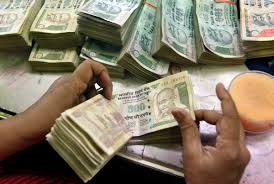In this blog post, Sandesara Neeli M., a Fourth Year B.L.S/LL.B student at Pravin Gandhi College of Law, the University of Mumbai and pursuing a Diploma in Entrepreneurship Administration and Business Laws from NUJS, Kolkata, details the business structure of Bandhan Bank.
Introduction
Bandhan Bank is the first bank headquartered in the eastern part of India, post-independence. It is headquartered in Kolkata, West Bengal. Under the leadership of Mr Chandra Shekhar Gosh[1], this bank has proven how economic and social emancipation can go hand in hand. In most Indian languages the word Bandhan means ‘bond’ or ‘togetherness’. This word is so apt for this bank as it shows a serious bond of Mr Ghosh with the lower strata of the society. Inspired by this word in 2001, this ‘bond’ was born.[2]
 Bandhan Bank Limited was incorporated on 23rd December 2014 as a wholly owned subsidiary of Bandhan Financial Holdings Limited. This bank received approval from RBI to be established as a universal bank in April 2014 and later, in June 2015 received a green signal from the banking regulator. [3]
Bandhan Bank Limited was incorporated on 23rd December 2014 as a wholly owned subsidiary of Bandhan Financial Holdings Limited. This bank received approval from RBI to be established as a universal bank in April 2014 and later, in June 2015 received a green signal from the banking regulator. [3]
This bank under the Chairmanship of Dr Ashok Lahiri and Mr Ghosh as its chief executive officer and the managing director has received numerous accolades for its contribution towards the weaker sections of the society.
Some Important Data
Bandhan Bank has paved a way to provide services to the weaker section of the society who cannot have access to the formal banking system. From the time of its birth (i.e. in the year 2001), this bank has provided loans and small time finances to around 6.7 million women borrowers. Just in 15 years of its establishment, its network is spread across 2,022 branches in over 22 states and union territories and employs over 19,500 people. With providing a loan of Rs. 9,524 crores in such a short span of time, commendable are the word!
The following data is even more astonishing; it opened up with 501 branches and 51 ATMs just on day one! Its target for the fiscal year 2015-16 is to open up 12,000 branches and 150 ATMs across 27 states.
It provides its banking facilities to urban, semi-urban and rural population alike. Though it provides its services to all the sections of the society, it still focuses on uplifting the lower strata of the society i.e. those who are neglected by the formal banking systems. And endows them with better health, education and self-employment opportunities.[4]
Origination of Bandhan Bank
- April 2014: Bandhan gets in-principle nod for banking licence
- May 2014: Announces appointment of Deloitte as advisor for formation of Bandhan bank
- August 2014: Announces appointment of Aon Hewitt to design and implement a compensation strategy for workforce
- September 2014: Announces the appointment of FIS as technology partner
- September 2014: Announces appointment of Ogilvy & Mather for brand building
- January 2015: Announces IFC & GIC SI will commit fresh equity investment of Rs 1,600 crore in Bandhan
- March 2015: Announces appointment of Madison Media for formulating an advertisement strategy[5]
After obtaining its banking license, Bandhan could foresee some obstacles such recruiting skilled workforce, setting up an efficient and the most recent information technology for core banking solution, stepping into new domains of brand building and treasury operations. Its major tasks in the initial days included branch-level lending and collection in groups.
A lot of renowned companies have been appointed to look after its various portfolios and accomplishing its strategies and objectives. These companies are- It has appointed Madison Media, which is very well-known for handling Bhartiya Janata Party’s advertising affairs, for an advertising campaign. Ogilvy & Mather is assigned brand-building, which will include another integral part of its business i.e. designing a logo and framing advertising strategies. FIS, a US-based banking and payment technology solution provider, is looking at implementing a cost effective and efficient information technology (IT) platform, a vital area for Bandhan. Aon Hewitt, a human resource consulting arm of London-based Aon Plc, will design a compensation programme for employees. Deloitte, Bandhan’s consultant for its banking licence application, has been roped in as a consultant for the banking foray.[6]
Business Structure
Bandhan has recruited a total staff of about 16,000 people. This staff includes a total of 3,500 people recruited from the top public and private sector banks.
As a microfinance institution, for the year 2014-2015, this bank provided a loan of about 9,500 crore rupees, 30% higher than the previous year. At the branch level, it has trained about 13,000 employees, in banking activities. At the outset, world-renowned financial institutions like International Financial Corporation (a wing of the World Bank) and GIC (Singapore’s Sovereign Wealth Fund) has infused a capital of about Rs. 1,600 crores.
Organizational Structure
- Organization or Strategic Business Unit
- Structure- Organizational and Strategic
- Resources- Financial and Human
- Delivery of products and services
- Market- Meeting of demand and supply
- External Relation[7]
The microfinance business models are designed to address the challenges which are faced by the traditional financial services in bringing the unprivileged section together and making them aware of the banking services which are affordable and has a sustainable cost.
A Joint Liability Group (JLG) which consists of 4 to 10 people is formed for the purpose of availing bank loans which is obtained by mutual security or singly. The JLG would offer joint undertaking after which they can avail loan facilities. These members are expected to be in the same kind of economic activity say for example crop production. The management is minimal or nil in these groups.
Apart from such farmers, there is a group of entrepreneurs which come from a homogenous economic and social background, who mutually save money for meeting emergency ends. Such groups are called as Self- Help Groups (SHGs) which may be registered or unregistered. These groups use peer pressure and collective use of their wisdom in order to meet their credit ends and repayment of loans. The system eliminates the use of the collateral and focuses on the solidarity lending, which is mainly used in the microfinance institution. For simplicity in maintaining books, the loan is provided on flat interest rates.
The concept of microfinance started in the late 1990s. after catering to a large part of the rural poor, now it has started emerging in the urban areas in order to cater the needs of the urban poor. Some microfinance institutions like Bandhan Bank, Ujjivan, Swadhar FinAccess also operate in urban areas. Banks find it difficult to provide loans in the absence of sufficient collateral and hence now they are changing into Non- banking Financial Institutions to widen their capital base.
These Banks provide loans with the interest rate of 25 to 35%; they justify this interest rate by charging high cost in the delivery of their loans to the untested customers. Because of this much foreign as well as the Indian banks are getting into the partnership with these microfinance institutions. The two main aims of this kind of partnership are to get as much as repayment of loans i.e. to minimise the default rate and to maximise their returns.[8]
Interest Rates provided by Bandhan Bank
The following table makes the interest rates very clear on various accounts and transactions-
| Accounts/Transaction/Facilities | Rate of interest | Comparison with its counterparts (private and public banks) |
| On Savings Account | 4.25% p.a. on deposits below 1 Lakh and
5% p.a. on deposits above 1 Lakh. |
Banks like Yes Bank, Kotak Mahindra and IndusInd Bank provide interest of about 5-7% p.a. |
| On Fixed Deposits | 8.50% p.a. on deposits that mature with 1 to 3 years | State Bank of India is offering the interest rate of 7.75% p.a. |
| Base Rate | 12% p.a. | At present, many commercial banks have slid down to 10% p.a. |
| Home Loan and Loan against the Property | These two loans are linked to the Base Rate. | |
| On home loans and Loan against the Property, the processing fees are 1% or Rs. 5000 plus the service tax, whichever is higher.
On two-wheelers loan, a customer will have to pay a portion of the loan amount i.e. 3% as the processing fee. |
||
| Locker facility | At Rs. 1000/- | Many large commercial banks are lending this facility as Rs. 3000/- |
| Currently, the bank does not provide the third party facilities/ products like mutual funds and insurance[9] | ||
Why does India need such Bandhan Banks?
Poverty is the main cause of concern for this country since time immemorial. A very large part of rural India is yet not free from the shackles of poverty. This evil is slowly seeping amongst the urban Indians too. A microfinance institution just like our Bandhan Bank caters to a large number of rural poor people by providing them facilities of loan and interests on various deposits.
Micro-finance institution is considered as one of the most effective tools in reducing poverty. This is effective in reducing the gap between the poor strata and the formal financial organisations. Not just in India but every country where poverty is rampant can resort to this kind of banking as it provides credit to micro-entrepreneurs, poor families and impoverished women. It has an additional responsibility of serving the economically marginalised class.[10]
Conclusion
As we have seen ahead how effective this stint has been in this country, we can foresee how a micro finance can improve the standard of living of poor people and help them achieve their aims. Keeping the standards and the parameters simple and using the cost effective methods to reach the lower strata can make all the difference which a society like India requires.
References:
[1] http://www.bandhanbank.com/about-bandhan-bank.aspx
[2] http://www.firstpost.com/business/bandhan-bank-is-born-chandra-shekhar-ghoshs-incredible-journey-from-a-sweet-shop-to-owning-a-bank-2301082.html
[3] http://www.bandhanbank.com/about-bandhan-bank.aspx
[4] http://www.bandhanbank.com/about-bandhan-bank.aspx
[5] http://www.business-standard.com/article/finance/bandhan-sets-september-deadline-for-bank-115040200806_1.html
[6] http://www.business-standard.com/article/finance/bandhan-sets-september-deadline-for-bank-
[7] http://www.sa-dhan.net/Adls/Microfinance/MIS/OrganisationalManagementPlaning.pdf
[8] http://www.iibf.org.in/documents/reseach-report/Report-24.pdf- Pg.No.106
[9] http://www.livemint.com/Industry/36eDjyGuOqFRiJtC0yetkL/Ten-things-you-need-to-know-about-Bandhan-Bank.html
[10] http://www.microfinanceinfo.com/micro-financial-institutions/
 Serato DJ Crack 2025Serato DJ PRO Crack
Serato DJ Crack 2025Serato DJ PRO Crack









 Allow notifications
Allow notifications




You can also find all bandhan bank branches IFSC Code list on below link.
http://www.codebankifsc.com/